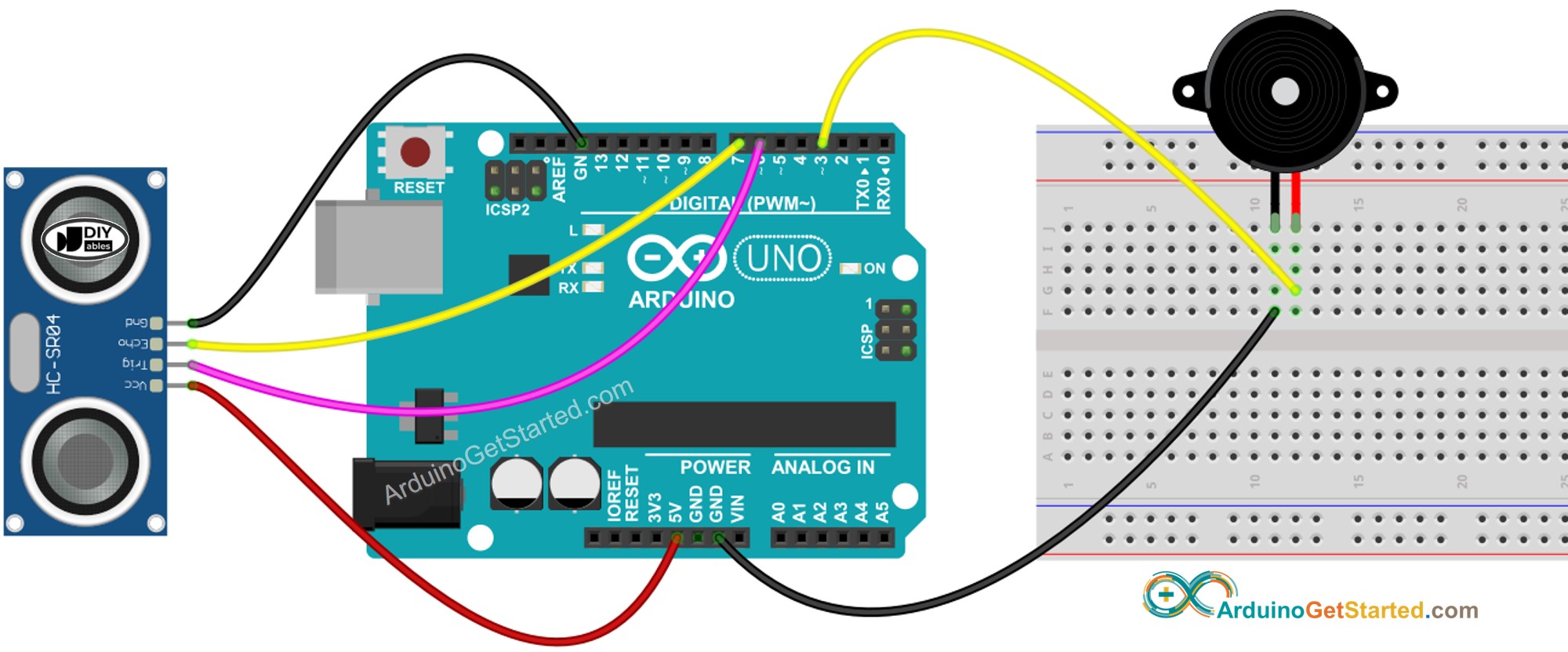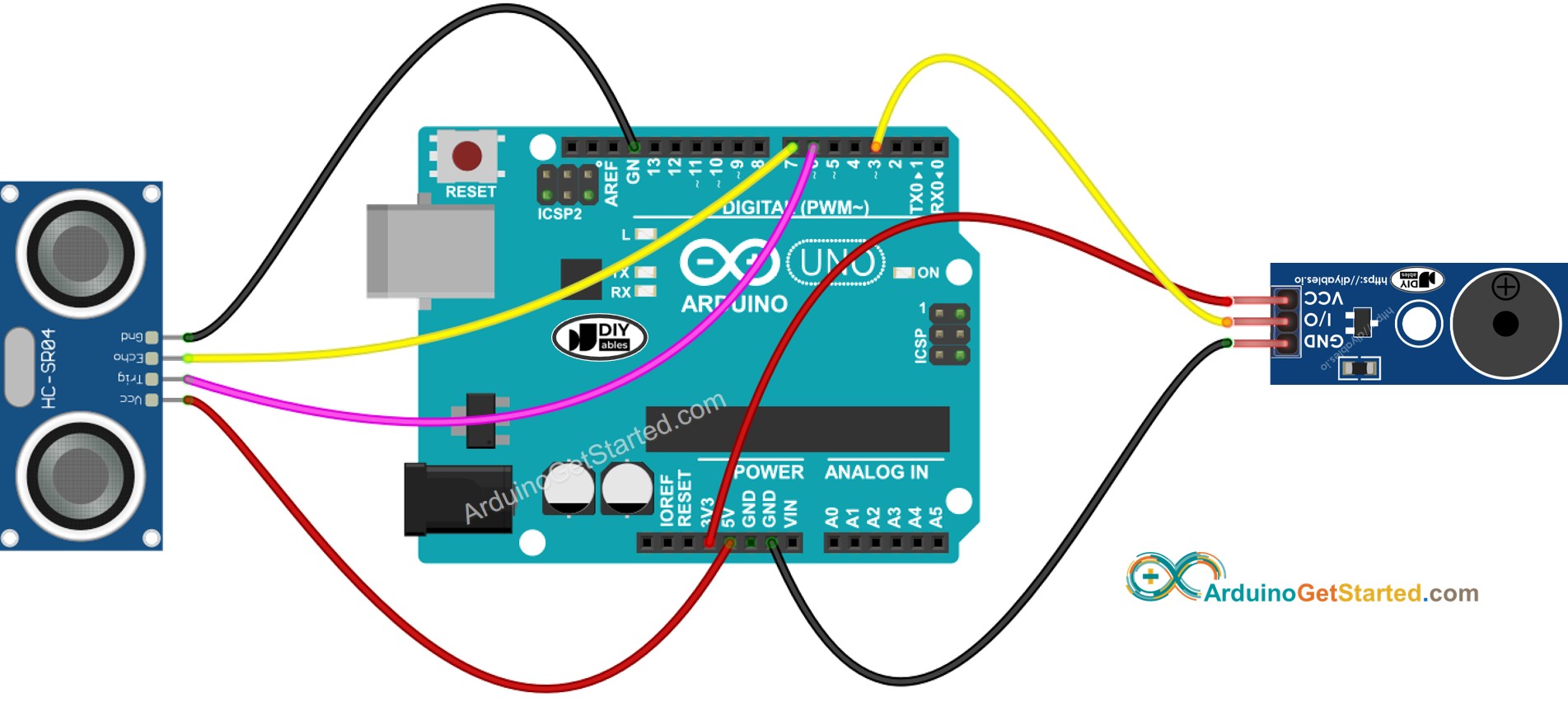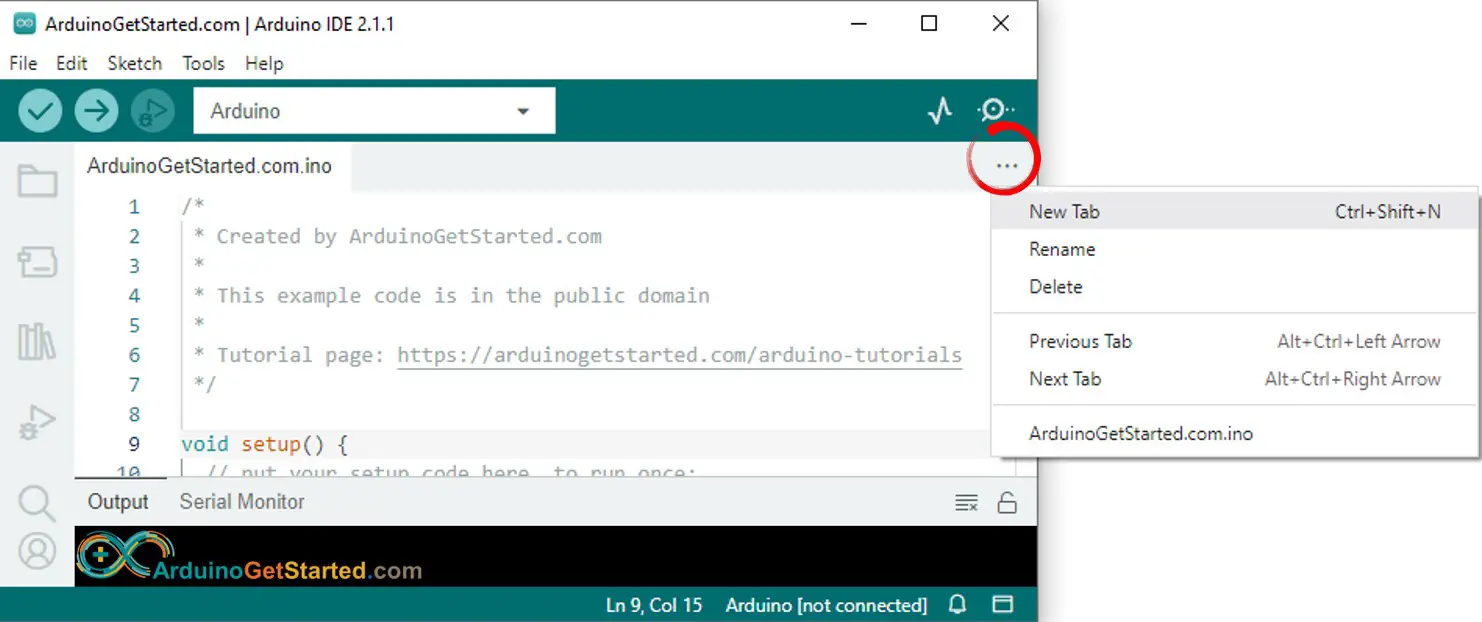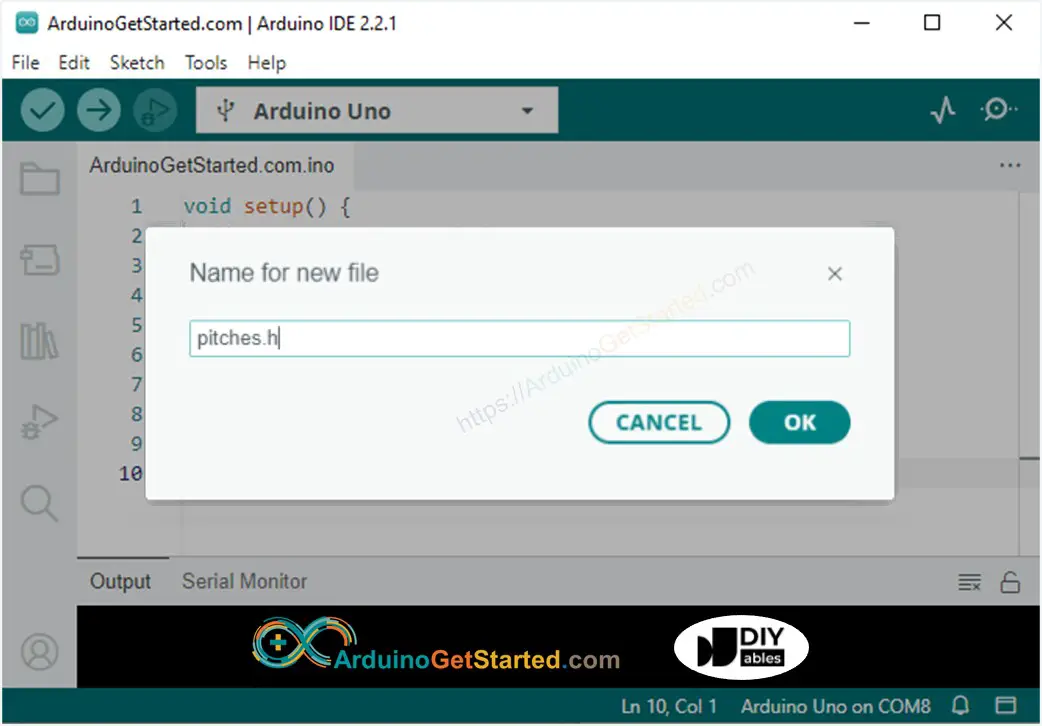Arduino - Ultrasonic Sensor - Piezo Buzzer
We are going to learn how to use Arduino to control the piezo buzzer using Arduino and ultrasonic sensor:
- If the object is close to ultrasonic sensor, make sound
- If the object is far from ultrasonic sensor, stop making sound
- If the object is close to ultrasonic sensor, make melody of song
Hardware Required
Or you can buy the following kits:
| 1 | × | DIYables STEM V3 Starter Kit (Arduino included) | |
| 1 | × | DIYables Sensor Kit (30 sensors/displays) | |
| 1 | × | DIYables Sensor Kit (18 sensors/displays) |
Additionally, some links direct to products from our own brand, DIYables .
About Piezo Buzzer and Ultrasonic Sensor
If you do not know about piezo buzzer and ultrasonic sensor (pinout, how it works, how to program ...), learn about them in the following tutorials:
Please note that this tutorial use 3-5V buzzer, but you can adapt it for 12v buzzer. you can learn about Arduino - Buzzer tutorial
Wiring Diagram
- The wiring diagram between Arduino, ultrasonic sensor, and piezo buzzer

This image is created using Fritzing. Click to enlarge image
- The wiring diagram between Arduino, ultrasonic sensor, and piezo buzzer module

This image is created using Fritzing. Click to enlarge image
Arduino Code - Simple Sound
Quick Steps
- Connect Arduino to PC via USB cable
- Open Arduino IDE, select the right board and port
- Copy the above code and open with Arduino IDE
- Click Upload button on Arduino IDE to upload code to Arduino
- Move your hand in front of sensor
- Listen to piezo buzzer's sound
Code Explanation
Read the line-by-line explanation in comment lines of source code!
Arduino Code - Melody
Quick Steps
- Copy the above code and open with Arduino IDE
- Create the pitches.h file On Arduino IDE by:
- Either click on the button just below the serial monitor icon and choose New Tab, or use Ctrl+Shift+N keys.
- Give file's name pitches.h and click OK button
- Copy the below code and paste it to the created pitches.h file.
- Click Upload button on Arduino IDE to upload code to Arduino
- Move your hand in front of sensor
- Listen to piezo buzzer's melody
- The above code is for the learning purpose. The ultrasonic sensor is very sensitive to noise. If you want to use the ultrasonic sensor in practice, you should filter noise for the ultrasonic sensor. See how to filter noise for ultrasonic sensor


Code Explanation
Read the line-by-line explanation in comment lines of source code!
※ NOTE THAT:
Video Tutorial
We are considering to make the video tutorials. If you think the video tutorials are essential, please subscribe to our YouTube channel to give us motivation for making the videos.
